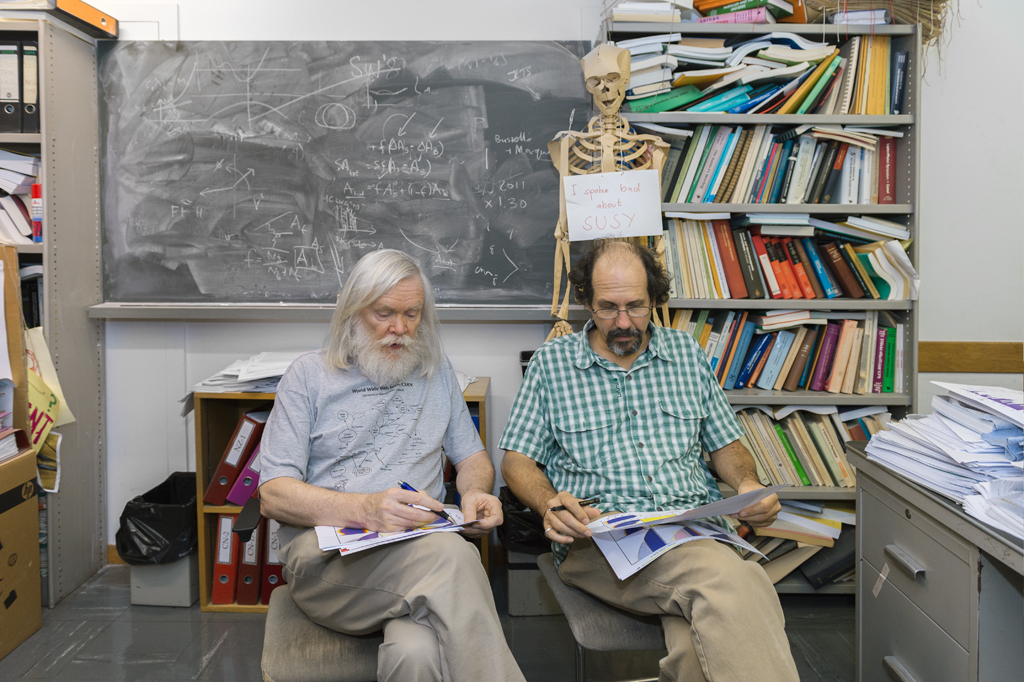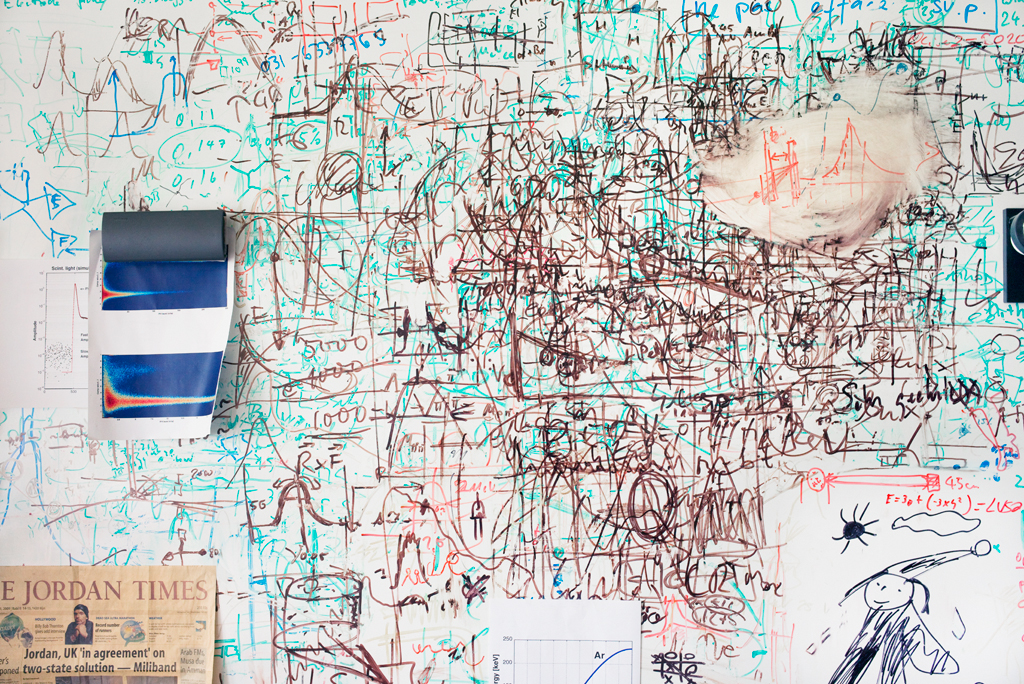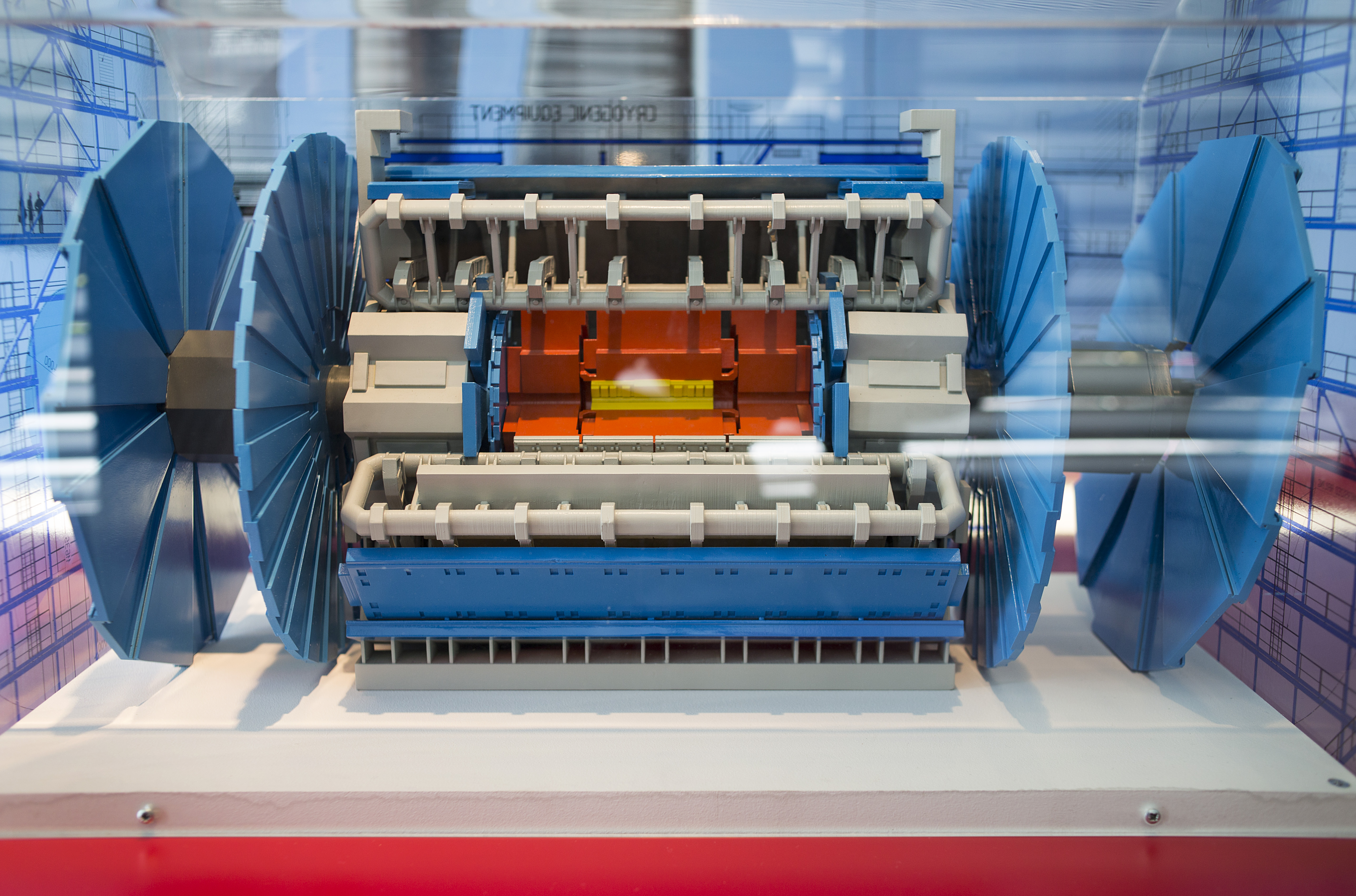Minds over matter … and antimatter
The hunt for fundamental cosmic building blocks at the European Organization for Nuclear Research (CERN) near Geneva has taken place in a remarkable – but also rather simple – environment.
Almost 10,000 scientists from around the world work at CERN. There is nothing very flashy about the hundreds of grey, utilitarian buildings and offices scattered across the huge site on the French-Swiss border north of the city. Inside, blackboards hang on office walls covered with endless scribblings and mathematical equations. Outside, a sign hangs on one door, “No cleaning here”. At CERN, the priority is serious research rather than a tidy office or smart suit and tie.
The most important riches lie underground, namely the Large Hadron Collider, the world’s biggest particle accelerator, responsible for collecting the scientific results that led to the discovery of the elusive Higgs particle.
Swiss photographer Andri Pol spent two years following CERN reserarchers and has published a book of his results.
“I was fascinated by these passionate people’s enthusiasm which gave me the idea of doing this book,” he explains. “After two years I can only say that it was worth being there to watch. I learnt a great deal.”
(Photos: Andri Pol; text: Andreas Keiser, swissinfo.ch)


















You can find an overview of ongoing debates with our journalists here . Please join us!
If you want to start a conversation about a topic raised in this article or want to report factual errors, email us at english@swissinfo.ch.